 Eastern Iowa Review is a new annual print publication, providing select essays online for readers to sample. Founding Editor Chila Woychik [pictured] embarked on this venture with six years’ editorial management experience from Port Yonder Press as well as expertise publishing other literary magazines over the past several years. Assistant Editor Beverly Nault and other staff with Eastern Iowa Review bring both academic and professional experience, creating an eclectic team that provides plenty of input from which Eastern Iowa Review will take its direction.
Eastern Iowa Review is a new annual print publication, providing select essays online for readers to sample. Founding Editor Chila Woychik [pictured] embarked on this venture with six years’ editorial management experience from Port Yonder Press as well as expertise publishing other literary magazines over the past several years. Assistant Editor Beverly Nault and other staff with Eastern Iowa Review bring both academic and professional experience, creating an eclectic team that provides plenty of input from which Eastern Iowa Review will take its direction.
With all her experience, Woychik not only knew what she was getting into with a literary magazine start-up, but sought it at this point in her career. “Book publishing is a lot of work,” she told NewPages. “I loved what I did at Port Yonder for those six years, loved every minute of it, but it became too much. Once I discovered the literary journal market and began to see my own writing being acquired, I felt it was time to move from small press book publishing to journal publishing. It’s been a great change for me; I’m enjoying it immensely.”
The first issue of Eastern Iowa Review actually had a predecessor, Woychik explained, “We actually did a pre-issue we called the Bonté Review (French for ‘goodness’) but found the name didn’t quite portray the sense of place I felt it needed. I’ve lived in the eastern part of Iowa for twelve years now and am enamored with this state, its people, and its topography, especially the rolling hills, trees, and wildlife in this area. I found it to be a fitting name, and though similar to another well-known publication in the state, I feel our focus is different and therefore have no need to compete with or be compared to another. Besides, Iowa is such a fantastic literary venue in itself that it deserves more than one or two journals.”
The (true) inaugural issue of Eastern Iowa Review includes creative nonfiction, literary fiction, and art, while the second issue, Woychik hopes, will be narrowed down “to the thing I love reading and writing the most: Annie Dillardesque lyric essays and Gertrude Steinesque / Anne Carsonesque experimental essays.” The Review isn’t ruling out the hybrid essay at this time, “though terms overlap so much that we’re actually receiving a good number of generic creative nonfiction essays, a few of which we’ve accepted because they were good, though not necessarily containing the lyricism we’re seeking,” said Woychik. “What we’re after is the song, the lyricism, and the uniqueness, the experimental. There are plenty of outlets for general creative nonfiction but I want to wean us off that, if we can find enough of what we’re seeking.”
For their first issue, Eastern Iowa Review was fortunate enough to snag Fulbright Scholar, Pew Fellow, Kingsley Tufts and Pushcart winner Afaa Michael Weaver to contribute an autobiographical piece on craft, and Stephanie Dickinson contributed three short literary fiction works. “As far as I’m concerned,” Woychik said, “Stephanie is one of America’s most brilliant writers; everything she pens is linguistically beautiful, achingly so, even given the tough topics she often broaches.” Although the publication is new new, Woychik hopes that within the next few years they can attract both top-notch and beginning writers. “I would love to see Eastern Iowa Review be the breakout journal for a few soon-to-be nationally well-known authors,” keeping with their overall desire to “attract great writing, lyrical writing, experimental writing, from whomever, and see entire families enjoy it from front to back.”
Writers who submit works can expect that they will be treated to a thorough review process. Submissions are sent through Submittable, then Woychik assigns each piece to one reader/editor or possible more, even up to all four readers/editors. They record their recommendations, Woychik reads those, reads the work itself, and makes the final decision.
It’s a process that will provide readers with “the strongest, highest level, prose” the editors can find in the lyric and experimental realms. Woychik added, “I also have a special interest in seeing young people, beginning in middle grade or so, discover a love of the literary world, something beyond ‘simple’ reading. I’m not sure why we often wait until a person gets into university to introduce them to the world of literary writing. I would like to see young folks catch the rhythm of fine literary writing, the lyricism inherent in good writing, long before they reach college. So we have a ‘wide audience’ requirement, that is, we would like the material, literary and high level as it is, to also be fitting for most all ages.” Beginning with the second issue, Eastern Iowa Review will be able to offer accepted contributors a complimentary copy of the issue plus a small stipend, and also enter their work into the Eastern Iowa Review Essay Award pool, an annual award for the most outstanding lyric and/or experimental essay accepted.
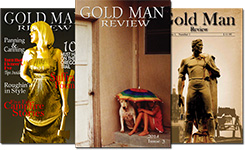 “We can’t believe it has already been five years since Gold Man Review was born,” writes founding editor Heather Cuthbertson and her colleagues, Managing Editor Darren Howard, Project Editor Nicklas Roetto, Executive Editor Marilyn Ebbs, and Associate Editor Michelle Modesto. “When we started Issue 1, we weren’t thinking about where we’d be in the future – only that we wanted to be an outlet for work that hadn’t an outlet and put authors and poets into print who hadn’t had the chance before. Since then, we’ve had the opportunity to publish award-winning authors, seasoned writers, and even the poet laureate of Oregon, but we’ve also had the pleasure to publish brand new voices and then watch those authors grow and develop their writing careers.”
“We can’t believe it has already been five years since Gold Man Review was born,” writes founding editor Heather Cuthbertson and her colleagues, Managing Editor Darren Howard, Project Editor Nicklas Roetto, Executive Editor Marilyn Ebbs, and Associate Editor Michelle Modesto. “When we started Issue 1, we weren’t thinking about where we’d be in the future – only that we wanted to be an outlet for work that hadn’t an outlet and put authors and poets into print who hadn’t had the chance before. Since then, we’ve had the opportunity to publish award-winning authors, seasoned writers, and even the poet laureate of Oregon, but we’ve also had the pleasure to publish brand new voices and then watch those authors grow and develop their writing careers.”
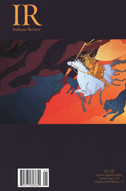 Poetry Judge Eduardo Corral
Poetry Judge Eduardo Corral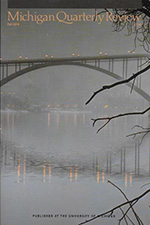 “Charles Baxter and MQR” by Laurence Goldstein
“Charles Baxter and MQR” by Laurence Goldstein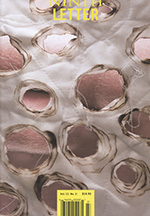 The
The 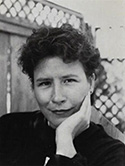 With spare yet deeply evocative prose, “Floating Garden” sweeps us up into the span of a singular life, one that is as sacred as any other, one for whom “the words for things take us from what matters.” This story is a profound meditation on the nature of brutality – of man against man, of man against nature – yet it is also an unsentimental song of how we can be redeemed, “like dust into soil, so dark, so primordial.” This is a lovely gem of a tale.
With spare yet deeply evocative prose, “Floating Garden” sweeps us up into the span of a singular life, one that is as sacred as any other, one for whom “the words for things take us from what matters.” This story is a profound meditation on the nature of brutality – of man against man, of man against nature – yet it is also an unsentimental song of how we can be redeemed, “like dust into soil, so dark, so primordial.” This is a lovely gem of a tale. Told in a rollicking, expressionistic voice, “The Hooligan Present” delivers that rarest of reading experiences; it actually makes you laugh, and then it makes you cry, and then it leaves you grateful for such artistry, for such a generous and humane vision of this dirty old world.
Told in a rollicking, expressionistic voice, “The Hooligan Present” delivers that rarest of reading experiences; it actually makes you laugh, and then it makes you cry, and then it leaves you grateful for such artistry, for such a generous and humane vision of this dirty old world.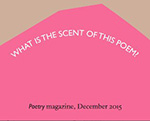 Poetry
Poetry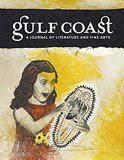 The
The 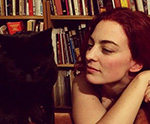 Drunken Boat
Drunken Boat Eastern Iowa Review
Eastern Iowa Review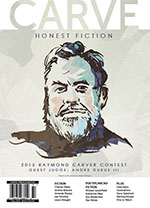 Now in its 15th year, the
Now in its 15th year, the 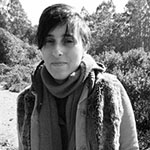 From Editor Stephanie G’Schwind’s
From Editor Stephanie G’Schwind’s  First place: S. P. MacIntyre [pictured], of South Florida, wins $1500 for “Pinch.” His story will be published in Issue 98 of Glimmer Train Stories.
First place: S. P. MacIntyre [pictured], of South Florida, wins $1500 for “Pinch.” His story will be published in Issue 98 of Glimmer Train Stories. The Fall/Winter 2015 issue of University of Alambama’s
The Fall/Winter 2015 issue of University of Alambama’s  “Just what makes an essay literary ?” begins David H. Lynn’s Editor’s Notes in the Nov/Dec 2015 issue of
“Just what makes an essay literary ?” begins David H. Lynn’s Editor’s Notes in the Nov/Dec 2015 issue of  The newest issue of
The newest issue of  According to the editors of
According to the editors of  Issue #192 of
Issue #192 of 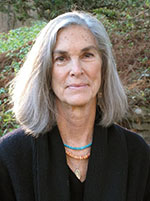 Margaret Gibson, author of the memoir The Prodigal Daughter and seven books of poetry, most recently Broken Cup (LSU Press, 2014), is featured in the Fall 2015 issue of
Margaret Gibson, author of the memoir The Prodigal Daughter and seven books of poetry, most recently Broken Cup (LSU Press, 2014), is featured in the Fall 2015 issue of 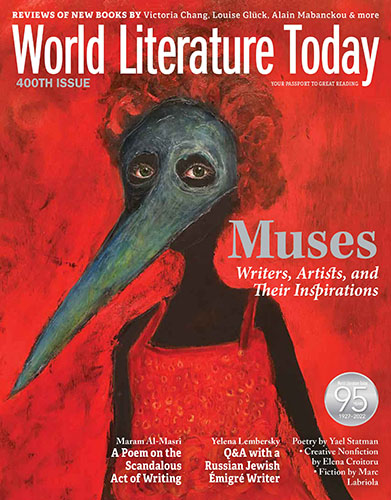 The newest issue of
The newest issue of  The Common
The Common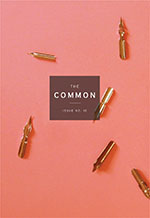 Contemporary Literature
Contemporary Literature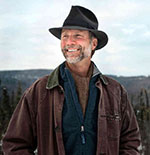
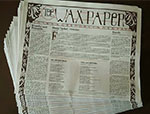 The Wax Paper
The Wax Paper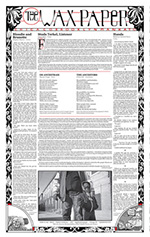 The Wax Paper Editor Hans Hetrick has writing experience from poetry to technical manuals. As Freeman tells the story, the two “became acquainted 60 feet 6 inches away from each other as the famed battery in Chicago’s Mexican Baseball League. Post-game conversation found a common interest and belief that great art must possess a generosity of spirit, a genuine respect for its audience and its subjects, and a dedication to craft. We immediately began work publishing a chapbook, Fighting Love, filled with Hans’ poems and my illustrations. After the publication of Fighting Love, Hans started trying to sell me on founding a magazine. Eventually, I relented, and The Wax Paper was born.”
The Wax Paper Editor Hans Hetrick has writing experience from poetry to technical manuals. As Freeman tells the story, the two “became acquainted 60 feet 6 inches away from each other as the famed battery in Chicago’s Mexican Baseball League. Post-game conversation found a common interest and belief that great art must possess a generosity of spirit, a genuine respect for its audience and its subjects, and a dedication to craft. We immediately began work publishing a chapbook, Fighting Love, filled with Hans’ poems and my illustrations. After the publication of Fighting Love, Hans started trying to sell me on founding a magazine. Eventually, I relented, and The Wax Paper was born.”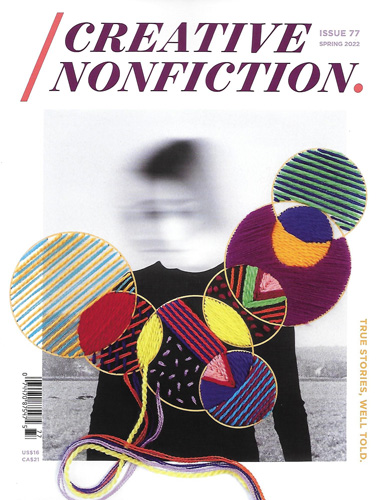 If you like
If you like 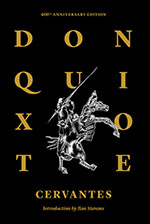 This year has brought a number of ways to celebrate the 400th Anniversary of Miguel De Cervantes’ Don Quixote.
This year has brought a number of ways to celebrate the 400th Anniversary of Miguel De Cervantes’ Don Quixote. 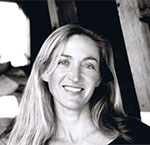 “There are standards, and we can be obedient to them. We can ask punctuation to be of service to meaning, in service of clarification, a hand to hold, a breeze at our backs. Standard punctuation is easy and safe and encouraged. It becomes almost invisible. ‘It was good enough for Shakespeare,’ a teacher once told me, ‘it’s good enough for you.’ Don’t be silly, I think he was saying. Don’t be a sophomore, or a sheep. Because he loved Bernhard and Beckett, too, their everlasting paragraphs induced by the substance and manner of what they had to say; there is nothing capricious about it. Nothing capricious about Merwin, whose unpunctuated, uncapitalized lines can look like leaves being blown from the page, light and dry and moving. Like wind in the fur of the foxes.” From Noy Holland’s
“There are standards, and we can be obedient to them. We can ask punctuation to be of service to meaning, in service of clarification, a hand to hold, a breeze at our backs. Standard punctuation is easy and safe and encouraged. It becomes almost invisible. ‘It was good enough for Shakespeare,’ a teacher once told me, ‘it’s good enough for you.’ Don’t be silly, I think he was saying. Don’t be a sophomore, or a sheep. Because he loved Bernhard and Beckett, too, their everlasting paragraphs induced by the substance and manner of what they had to say; there is nothing capricious about it. Nothing capricious about Merwin, whose unpunctuated, uncapitalized lines can look like leaves being blown from the page, light and dry and moving. Like wind in the fur of the foxes.” From Noy Holland’s 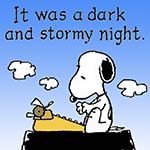 The First Line
The First Line The Florida Review
The Florida Review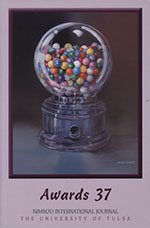 The Fall/Winter 2015 issue of
The Fall/Winter 2015 issue of 
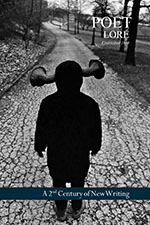
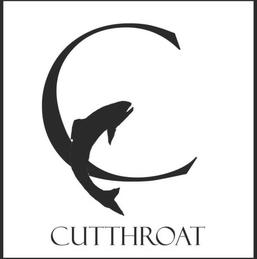
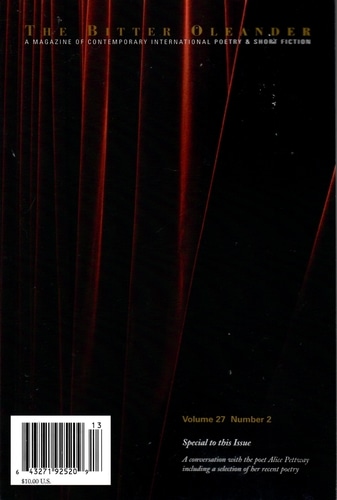 Stephanie Dickison is featured in the Autumn 2015 issue of
Stephanie Dickison is featured in the Autumn 2015 issue of 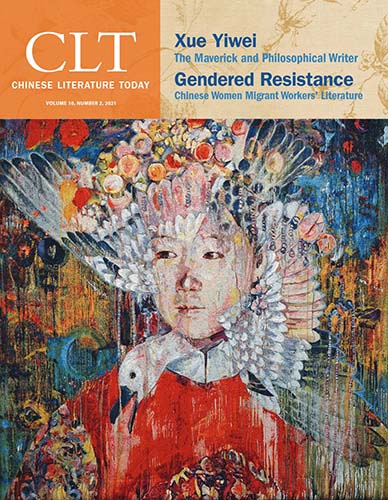 China’s Internet Literature: From “Live-Scene” Poetry to Million-Character Narratives is the special feature in the newest issue of
China’s Internet Literature: From “Live-Scene” Poetry to Million-Character Narratives is the special feature in the newest issue of 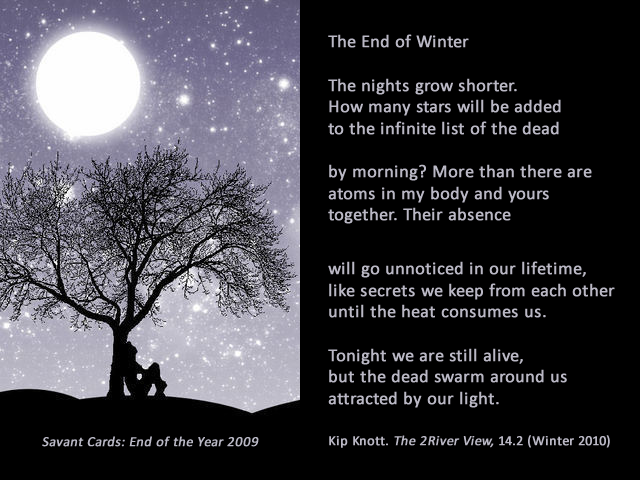 Like most Englishy folk, I love to read in print. But I also love the ease and accessibility of reading online lit mags. The
Like most Englishy folk, I love to read in print. But I also love the ease and accessibility of reading online lit mags. The 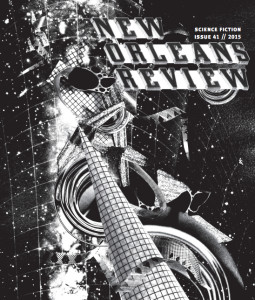 Science Fiction is the theme of the newest issue of
Science Fiction is the theme of the newest issue of 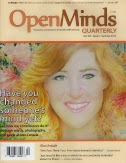 I love
I love  Adding to their print publication of outstanding writing,
Adding to their print publication of outstanding writing, 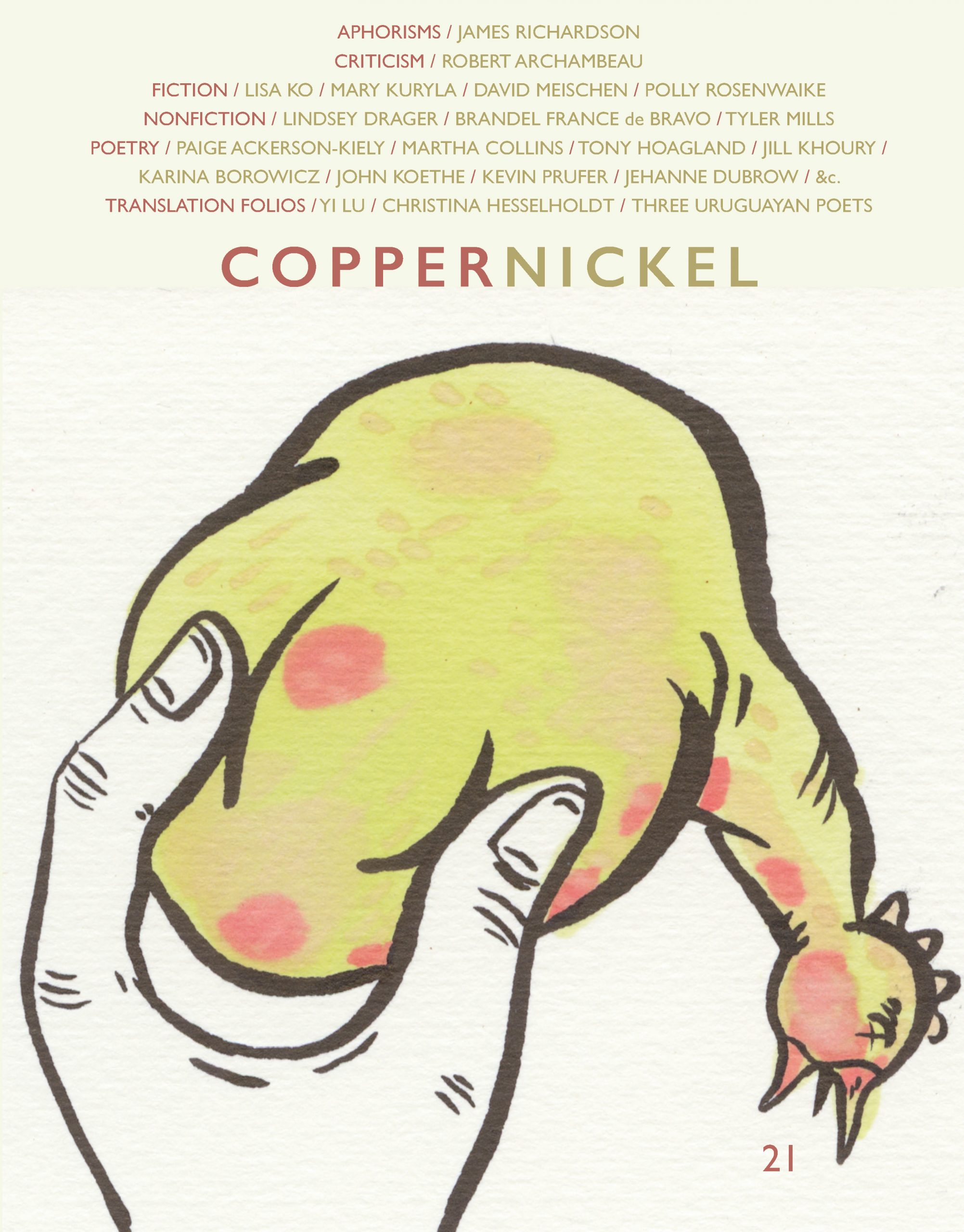 Beginning with issue 20, Copper Nickel is now offering two $500 Editors’ Prizes – one in poetry, one in prose – for the “most exciting work in each issue, as determined by a vote of [their] editorial staff.” You have to love the guidelines, which I find refreshing in this day and age of data, rubrics, and assessment. It’s nice to know that the abstract, subjective, and aesthetic have not been completely snuffed out when it comes to artistic appreciation of intelligent literary craft. Issue 21 announces the first winners (from #20) were Michelle Okaes for her poems “Bionics” and “How to Live” and Donovan Ortega for his essay “In a Large Coastal City.” Speaking of aesthetic appreciation, can we talk about that cover? (By
Beginning with issue 20, Copper Nickel is now offering two $500 Editors’ Prizes – one in poetry, one in prose – for the “most exciting work in each issue, as determined by a vote of [their] editorial staff.” You have to love the guidelines, which I find refreshing in this day and age of data, rubrics, and assessment. It’s nice to know that the abstract, subjective, and aesthetic have not been completely snuffed out when it comes to artistic appreciation of intelligent literary craft. Issue 21 announces the first winners (from #20) were Michelle Okaes for her poems “Bionics” and “How to Live” and Donovan Ortega for his essay “In a Large Coastal City.” Speaking of aesthetic appreciation, can we talk about that cover? (By  A great connection with STEM, the Fall 2015 issue of
A great connection with STEM, the Fall 2015 issue of 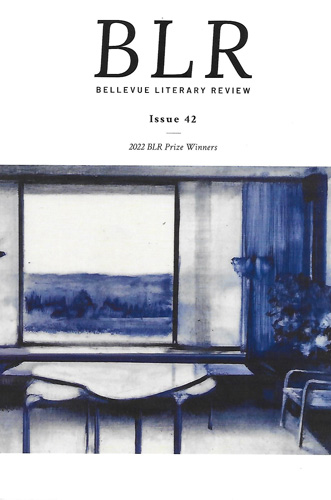 Bellevue Literary Review
Bellevue Literary Review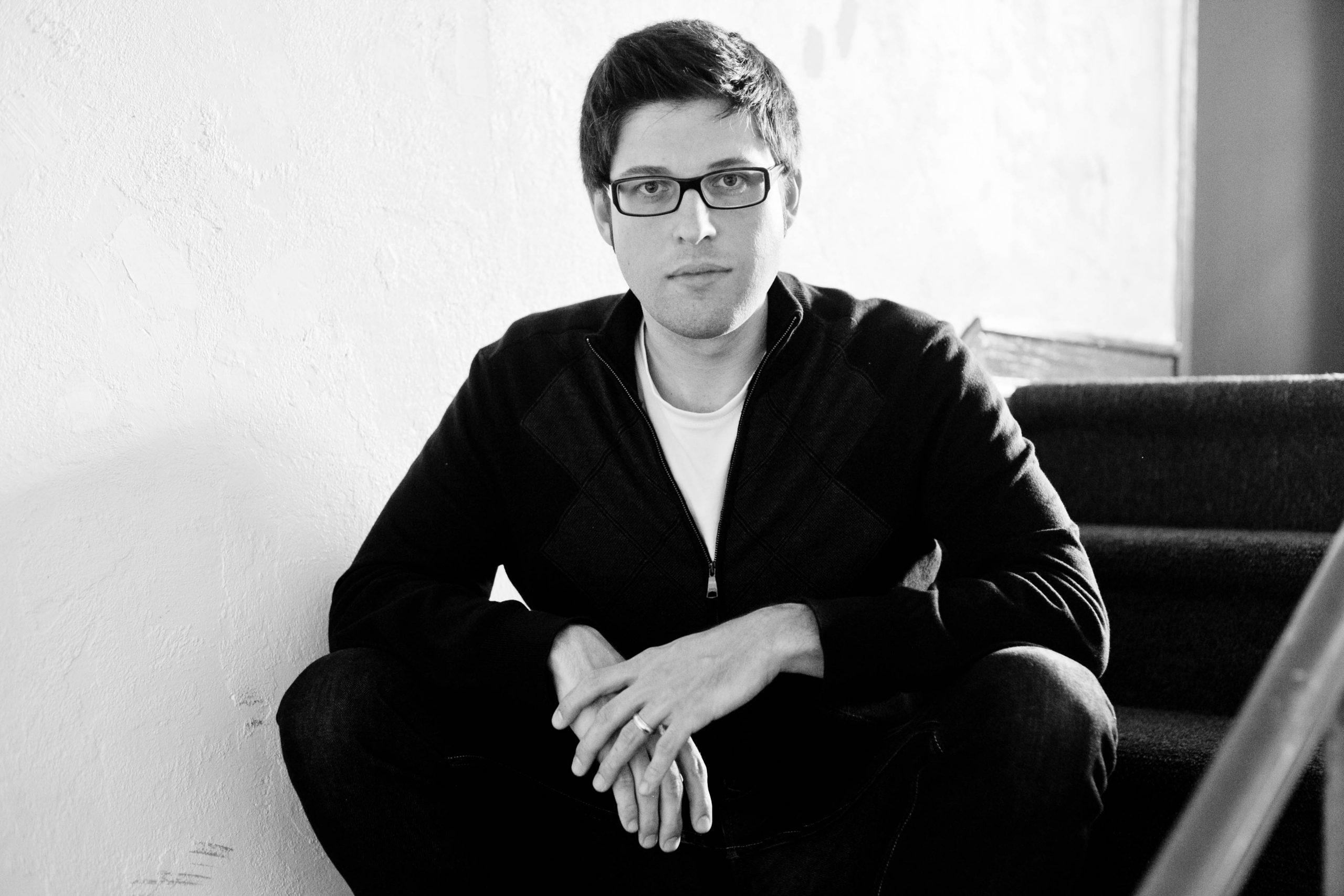 Glimmer Train
Glimmer Train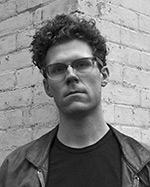 First place: Caleb Leisure [pictured], of Martinez, CA, wins $2500 for “Atlantic on Sunday.” His story will be published in Issue 97 of Glimmer Train Stories.
First place: Caleb Leisure [pictured], of Martinez, CA, wins $2500 for “Atlantic on Sunday.” His story will be published in Issue 97 of Glimmer Train Stories. Story’s second print issue is themed “The Monsters.” The double-sided issue feels like a literary preparation for Halloween, from Lincoln Michel’s horror-ified authors and Dorothy Tse’s “Woman Fish” on Side A, to the Tastoane masks of Corinne Lee’s essay “Kissing the Monster” on Side B.
Story’s second print issue is themed “The Monsters.” The double-sided issue feels like a literary preparation for Halloween, from Lincoln Michel’s horror-ified authors and Dorothy Tse’s “Woman Fish” on Side A, to the Tastoane masks of Corinne Lee’s essay “Kissing the Monster” on Side B.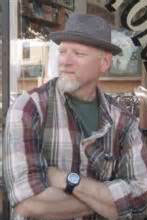 The 2015 annual issue of
The 2015 annual issue of 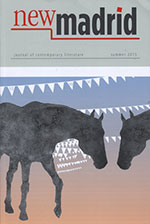 Happy 10th Anniversary to
Happy 10th Anniversary to